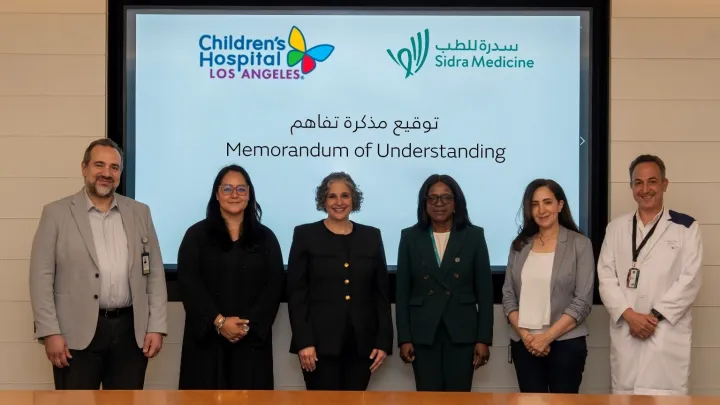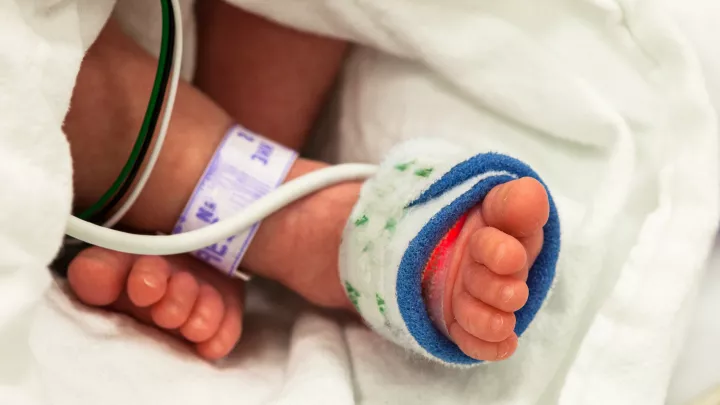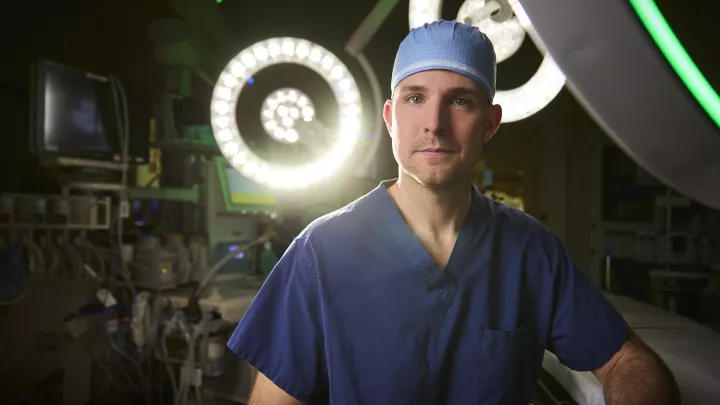Echocardiogram
An echocardiogram (echo), or cardiac ultrasound, allows the doctor to see how well your child’s heart is working. Echocardiography uses sound waves (ultrasound) to create pictures of the heart. An echocardiogram shows the heart’s chambers, walls, valves and blood vessels.
Pediatric Echocardiography Uses
Doctors use echocardiograms to diagnose and monitor heart problems. An echocardiogram can show your child’s heart:
- Structure: Echocardiography shows the anatomy, size, shape and thickness of your child’s heart, heart valves, blood vessels and heart lining (pericardium).
- Strength: A heart echo shows how strong and regularly your child’s heart pumps.
- Function: Doctors use echoes to see how your child’s heart is beating, how the valves are functioning and how the blood is flowing through the heart.
- Health: An echo can show blood clots, abnormal holes, tumors, infectious growths or fluid around the heart.
What to Expect During a Transthoracic Echocardiogram
The most common type of echocardiogram is a transthoracic echocardiogram. Typically, a sonographer (ultrasound specialist) performs a heart echo, but sometimes a cardiologist performs the test.
For this test:
- Your child will be placed in an exam room with their parent or guardian. The child will be provided a gown and asked to remove any clothing from the waist up.
- The sonographer places electrodes (small tabs) on your child’s chest to check your child’s heartbeat during the test.
- The sonographer puts gel on your child’s chest. The gel helps the sound waves travel between the heart and the transducer (cardiac ultrasound wand). The “echo” of the sound waves bouncing back creates the images.
- To perform the test, the sonographer moves the transducer around your child’s chest to get images from different angles. In most instances, virtually all of the heart and blood vessels can be seen by echo. However, occasionally some parts of the image are not clear. If this occurs, another form of imaging might be necessary and will be recommended by your doctor.
Your child may feel some pressure from the wand, but this test is not painful or invasive. A transthoracic echo usually takes 30 to 60 minutes.
Other Echocardiogram Types: What to Expect
In addition to a transthoracic echo, other types of echocardiograms include:
- Stress echocardiogram: A sonographer performs this type of transthoracic echo after your child exercises on a special reclining bicycle or takes medication to increase the heartbeat.
- Transesophageal echocardiogram: For this test, the doctor numbs your child’s throat and guides a tiny transducer down the esophagus until it is behind the heart. The tip of the transducer sends and receives ultrasound, and because the esophagus passes very close to the heart, this technique generally provides excellent imaging. Doctors use this type of echo if a transthoracic echo doesn’t show enough detail. A transesophageal echo also allows doctors to see the back of the heart better.
- 3D echocardiogram: This type of echo creates 3D images of your child’s heart. The sonographer may use a transthoracic echocardiogram or a transesophageal echocardiogram to get the images. Your child may need this test to diagnose a pediatric heart problem or to prepare for heart valve surgery.
- Fetal echocardiogram: Sonographers perform this type of echocardiogram on a pregnant woman’s abdomen. The fetal heart can be seen, and this technique can be used to look for fetal heart problems.
Echocardiogram Risks
Echocardiograms are very safe. Unlike some other heart imaging techniques, echoes do not use any radiation. The most common type, a transthoracic echo, does not have any risks.
Rare risks for other types of echo include:
- The transducer used in a transesophageal echo may occasionally scrape the esophagus. Usually, this only causes throat irritation, but in rare cases, it may cause more serious complications.
- The medication sometimes used for a stress echo can cause an irregular heartbeat or other complications. This is unlikely, and doctors monitor the procedure to prevent this from happening.
Cardiology Care at Children’s Hospital Los Angeles
At CHLA, your child receives excellent care from world-class experts. Learn more about our pediatric heart programs and services.


